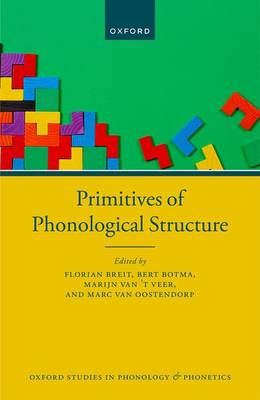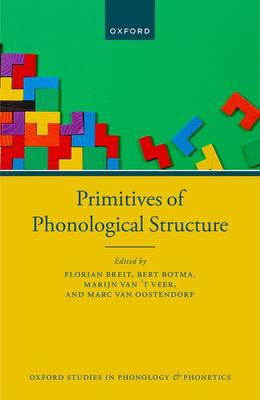
- Afhalen na 1 uur in een winkel met voorraad
- Gratis thuislevering in België vanaf € 30
- Ruim aanbod met 7 miljoen producten
- Afhalen na 1 uur in een winkel met voorraad
- Gratis thuislevering in België vanaf € 30
- Ruim aanbod met 7 miljoen producten
Zoeken
Primitives of Phonological Structure
€ 185,45
+ 370 punten
Omschrijving
This book brings together phonologists working in different areas to explore key questions relating to phonological primitives, the basic building blocks that are at the heart of phonological structure and over which phonological computations are carried out. Whether these units are referred to as features, elements, gestures, or something else entirely, the assumptions that are made about them are fundamental to modern phonological theory. Even so, there is limited consensus on the specifics of those assumptions. The chapters in this book present differing perspectives on phonological primitives and their implications, addressing some of the most pressing issues in the field such as how many features there are; whether those features are privative or binary; and whether segments need to be specified for all features. The studies cover a wide range of methodologies and domains, including experimental work, fieldwork, language acquisition, theory-internal concerns, and many more, and will be of interest to phoneticians and phonologists from all theoretical backgrounds.
Specificaties
Betrokkenen
- Uitgeverij:
Inhoud
- Aantal bladzijden:
- 400
- Taal:
- Engels
- Reeks:
Eigenschappen
- Productcode (EAN):
- 9780198791126
- Verschijningsdatum:
- 8/09/2023
- Uitvoering:
- Hardcover
- Formaat:
- Genaaid
- Afmetingen:
- 163 mm x 241 mm
- Gewicht:
- 762 g

Alleen bij Standaard Boekhandel
+ 370 punten op je klantenkaart van Standaard Boekhandel
Beoordelingen
We publiceren alleen reviews die voldoen aan de voorwaarden voor reviews. Bekijk onze voorwaarden voor reviews.







